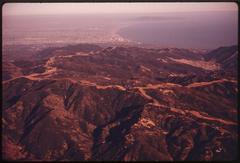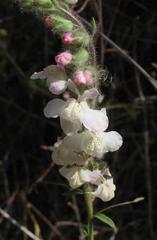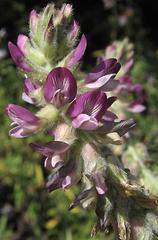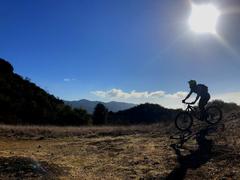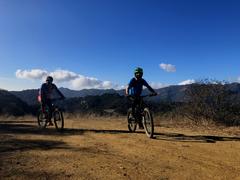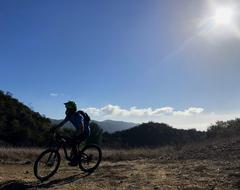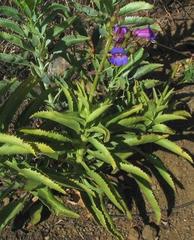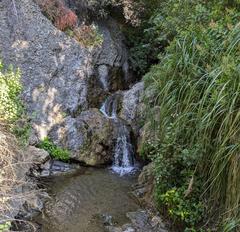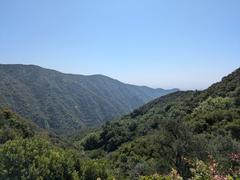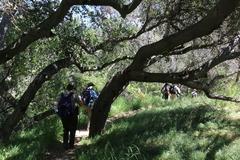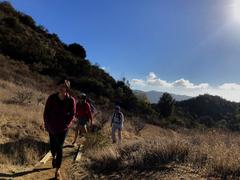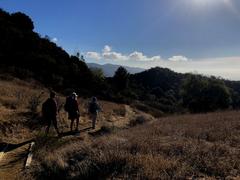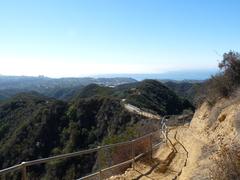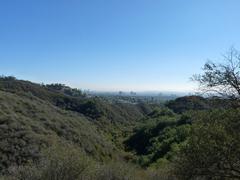
Topanga State Park Visiting Hours, Tickets, and Los Angeles Historical Sites Guide
Date: 14/06/2025
Introduction
Topanga State Park, located entirely within the city limits of Los Angeles and nestled in the Santa Monica Mountains, is a vast urban wildland spanning approximately 11,000 acres. Known as the largest wildland within a major U.S. city, it offers exceptional opportunities for hiking, wildlife observation, and exploration of Los Angeles’ layered cultural history. With over 36 miles of trails, diverse habitats, and sites of Indigenous and colonial significance, Topanga State Park is a treasured destination for nature enthusiasts, families, and history buffs alike (California State Parks; Travalour).
This guide provides comprehensive details on visiting hours, tickets, accessibility, travel tips, history, ecological highlights, and nearby attractions—ensuring you have all the information you need for a safe, memorable, and enriching visit to Topanga State Park.
Table of Contents
- Introduction
- Visiting Topanga State Park: Hours, Tickets, and Access
- Essential Travel Tips
- Historical and Cultural Significance
- Special Events and Community Activities
- Park Challenges and Conservation Efforts
- Natural Features and Ecological Highlights
- Recreation: Trails, Activities, and Facilities
- Guided Programs and Events
- Filming and Photography
- Nearby Attractions
- Frequently Asked Questions (FAQ)
- Visitor Recommendations and Conclusion
- Sources
Visiting Topanga State Park: Hours, Tickets, and Access
Visiting Hours
- Open Daily: 8:00 AM to sunset (hours may vary seasonally; check the official park website before your visit).
Tickets and Fees
- Admission: Free (no entrance ticket required).
- Parking Fees: $10–$15 per vehicle at Trippet Ranch and main lots. Annual California State Parks passes are accepted and available for purchase (California State Parks).
Accessibility
- Accessible Facilities: Trippet Ranch area includes paved paths, restrooms, and picnic areas suitable for visitors with mobility impairments. Most trails are unpaved and may not be suitable for wheelchairs or strollers (California State Parks Accessibility).
- Accessible Parking: Available at the main lot.
Directions and Parking
-
Address: 20828 Entrada Road, Topanga, CA 90290
-
From Pacific Coast Highway (PCH): Head north on Topanga Canyon Blvd, right on Entrada Road, keep left at forks to Trippet Ranch.
-
From Ventura Freeway (101): Exit Topanga Canyon Blvd, south over the crest, left on Entrada Road.
-
Parking: Limited, especially on weekends/holidays—arrive early for best availability (California State Parks Directions).
-
Public Transit: Limited; driving or rideshare is recommended.
Essential Travel Tips
- Arrive Early: Parking fills quickly on weekends and holidays.
- Bring Supplies: Carry water, sun protection, snacks, and sturdy shoes.
- Prepare for Limited Cell Service: Download trail maps in advance.
- Dog Policy: Dogs are allowed on leash on paved roads and picnic areas only—not on trails; clean up after pets (California State Parks).
- Safety: Stay on marked trails, watch for poison oak and snakes, and respect fire regulations.
- Weather: Spring and fall offer the mildest weather; summer can be hot, and winter trails may be muddy.
Historical and Cultural Significance
Indigenous Heritage
Topanga State Park has been inhabited for 8,000–10,000 years and was a meeting point for the Tongva and Chumash peoples. The word “Topanga” is from the Shoshonean language, meaning “above,” referencing the canyon’s position above floodwaters (California State Parks; Wikipedia). Visitors can find remnants of ancient villages, rock art, and trade routes throughout the park.
Colonial & Rancho Eras
Spanish colonization in the late 1700s disrupted Indigenous life. During the Mexican period, the area became part of Rancho San Vicente y Santa Monica, used mainly for cattle grazing. Early American statehood brought ranches and homesteads, including Trippet Ranch, now the main visitor hub (Wikipedia).
20th Century Community & Conservation
The early 1900s saw Topanga become a destination for health retreats and, by mid-century, a bohemian enclave for artists, writers, and musicians—especially in the 1960s–70s (We Like LA). This creative spirit endures through local events and environmental activism.
Park Establishment
California voters approved a bond in 1964 to acquire the land, establishing Topanga State Park in 1974. It now encompasses about 11,000 acres, preserving both wildland and historical features. The park balances habitat protection with the preservation of historic ranch sites like Trippet Ranch (Wikipedia).
Ongoing Cultural Connections
The park’s trails follow ancient Indigenous routes. Community events and educational programs continue to celebrate the area’s cultural diversity (Travel Lens).
Special Events and Community Activities
- Topanga Days: Annual Memorial Day weekend festival celebrating music, arts, and local culture (We Like LA).
- Docent-Led Hikes: Free guided walks Sundays (January–June) from Trippet Ranch.
- Wildflower Reports & Educational Programs: Seasonal updates and programs are available via phone and the visitor center (California State Parks).
Park Challenges and Conservation Efforts
Topanga State Park faces ongoing threats from urban encroachment, wildfire (notably the 2025 Palisades Fire), and habitat fragmentation. Restoration projects and community engagement are vital for recovery and sustainability (Wikipedia; LA Times). Some facilities may be closed for recovery; check current updates before visiting.
Natural Features and Ecological Highlights
Geology and Landscape
The park’s rugged terrain features dramatic sandstone outcrops (Eagle Rock, Red Rock Canyon), deep canyons, and rolling ridgelines with views of the Pacific Ocean and Los Angeles (Travalour). Seasonal streams support lush riparian corridors.
Habitats and Notable Flora & Fauna
- Habitats: Coastal sage scrub, chaparral, oak woodlands, riparian areas, and grasslands create a rich mosaic (Campsite Canada).
- Plant Diversity: Over 750 species, including rare wildflowers like Lyon’s pentachaeta and Dudleya, and spectacular spring blooms (LA Times).
- Wildlife: Mule deer, coyotes, bobcats, mountain lions (rare), raccoons, and numerous small mammals. Birdwatchers can spot red-tailed hawks, owls, woodpeckers, and migratory species. Native reptiles and amphibians are abundant.
- Aquatic Life: Topanga Creek supports endangered southern steelhead trout and tidewater goby (Topanga Lagoon Restoration Project).
Topanga Lagoon & Wetlands
A rare coastal wetland at the park’s southern edge, Topanga Lagoon is crucial for fish, migratory birds, and endangered species. Restoration projects are underway to enhance ecological function and resilience (Topanga Lagoon Restoration Project).
Fire Ecology and Recent Impacts
Fire shapes the landscape, but the 2025 Palisades Fire caused significant habitat and historic structure loss. Recovery efforts focus on native plant regeneration and invasive species control (LA Times).
Conservation Significance
Topanga State Park is a vital wildlife corridor, supporting high biodiversity within an urban setting. Conservation priorities include habitat restoration, public education, and adaptive management.
Recreation: Trails, Activities, and Facilities
Hiking, Biking, and Horseback Riding
- Hiking: Over 36 miles of trails for all abilities (Sometime Traveller):
- Eagle Rock Loop (4.2 mi): Iconic sandstone formation, panoramic views (Komoot Eagle Rock)
- Musch Trail: Passes historic ranches and shaded woodlands
- Red Rock Canyon Trail: Unique geology, creekside scenery
- Parker Mesa Overlook: Sweeping ocean and city vistas
- Backbone Trail: Links to regional parks for long-distance hiking
- Mountain Biking: Allowed on designated fire roads, including East Topanga Fire Road and Backbone Trail.
- Horseback Riding: Extensive equestrian trails with trailer parking at Trippet Ranch.
Wildlife and Nature Observation
- Birdwatching: Over 80 species, including raptors, songbirds, and migratory flocks.
- Butterfly and Wildflower Viewing: Especially vibrant in spring.
Picnicking, Camping, and Amenities
- Picnic Areas: Shaded tables near Trippet Ranch and along select trails (California.com).
- Restrooms: Available at Trippet Ranch and select trailheads.
- Water: Drinking water only at Trippet Ranch—bring enough for your hike.
- Camping: Primitive, hike-in only. No car camping; permits may be required (California State Parks).
Accessibility
- Facilities at Trippet Ranch are accessible; most trails are not. Accessible parking is available.
Guided Programs and Events
- Docent Walks: Sundays (Jan–June), 10 am, starting at Trippet Ranch kiosk. Free, 2-hour walks covering natural and cultural history. Canceled during rain or high fire risk (California State Parks).
- Special Events: Topanga Days, nature walks, wildflower hikes, and educational programs (We Like LA).
Filming and Photography
- Permits Required: For commercial, student, or professional filming/photography. Contact State Park film permit coordinator (California State Parks).
Nearby Attractions
- Topanga Historical Society Museum
- Will Geer Theatricum Botanicum: Outdoor theater performances
- Malibu Creek and Leo Carrillo State Parks: Camping options
- Los Angeles Historical Sites: Explore LA’s cultural landmarks nearby
Frequently Asked Questions (FAQ)
Q: What are Topanga State Park’s visiting hours?
A: Daily from 8:00 AM to sunset (hours may vary seasonally).
Q: Is there an entrance fee or ticket?
A: Admission is free; parking fees apply ($10–$15 at main lots).
Q: Where can I park?
A: Main lot at Trippet Ranch; arrive early for best availability.
Q: Are dogs allowed?
A: Only on paved roads and picnic areas (leash required); not on trails.
Q: Are there guided tours?
A: Yes, free docent-led hikes on Sundays (Jan–June).
Q: Is camping available?
A: Only hike-in, primitive camping (no car campgrounds).
Q: Are the trails accessible?
A: Some facilities are accessible at Trippet Ranch; most trails are not.
Visitor Recommendations and Conclusion
Topanga State Park stands as a rare convergence of urban proximity, ecological diversity, and layered history. Whether you are seeking invigorating hikes, wildlife encounters, or a connection to the region’s Indigenous and artistic heritage, the park delivers a one-of-a-kind experience.
Key Recommendations:
- Plan Ahead: Check official updates for hours, closures, and parking fees.
- Be Prepared: Bring supplies, wear appropriate gear, and respect all regulations.
- Support Conservation: Stay on trails, pack out trash, and participate in community events.
- Enhance Your Visit: Download the Audiala app for offline maps, updates, and event notifications.
By embracing responsible recreation and supporting ongoing restoration, visitors help safeguard Topanga State Park for future generations. Discover the scenic beauty, cultural significance, and tranquil escape this extraordinary urban wildland has to offer.
Sources
- California State Parks: Topanga State Park
- Travalour: Topanga State Park
- Sometime Traveller: 12 Hikes in Topanga Canyon
- California State Parks: Visitor Guide
- LA Times: Hiking Trail Recovery
- We Like LA: Fun Things to Do in Topanga Canyon
- Timeout LA: Historic Buildings Lost in Palisades Fire
- Museums Association: Will Rogers Museum Fire
- Topanga Lagoon Restoration Project
- California.com: Insider’s Guide to Topanga State Park
- Snoflo: Topanga State Park
- Komoot: Hiking in Topanga State Park
- Travel Lens: Best Things to Do in Topanga
